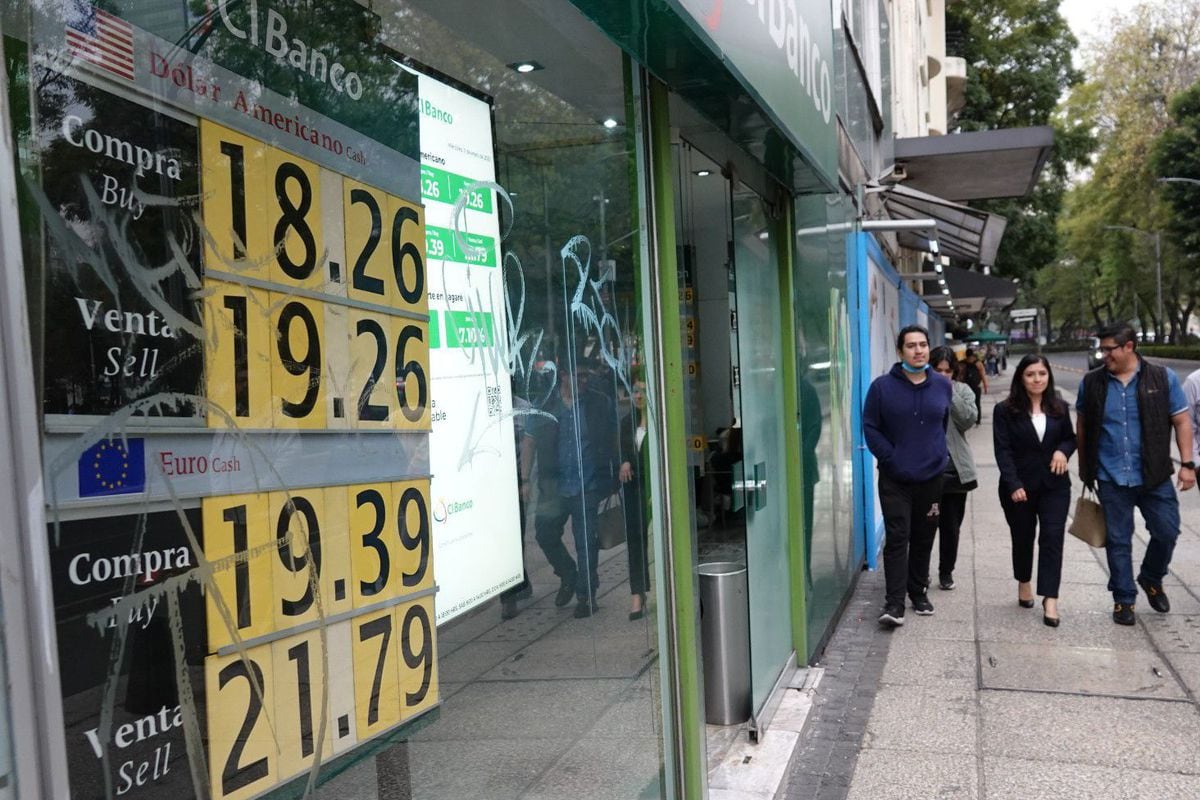Purchase and sale price of dollars and euros in a bank in Mexico City, on January 11, 2023. Graciela López Herrera (Cuartoscuro)
The Mexican peso is crowned today as one of the emerging currencies with the best performance in the last 12 months, driven by a virtuous combination of strong exports to the United States, remittances sent by Mexicans from abroad, the recovery of tourism after the pandemic and, above all, an attractive return on its market debt.
Its hot streak began in the middle of last year, and since then many analysts and
traders
have predicted a decline, but have missed.
To understand the magnitude of the recent appreciation of the Mexican currency, one must remember the blow that Donald Trump dealt the Mexican peso during his presidency, when his threats to impose tariffs and the renegotiation of the free trade agreement plunged it to the point of almost selling out. 23 pesos per dollar.
"The currency went to levels that we had not seen," recalls the economist and consultant Alexis Milo, who was an official in the Ministry of Finance.
"And it has been coming back, but very slowly, because the expectation of a radical transformation in the Mexican foreign trade landscape never materialized."
The peso currently sells for around 18.40 to the dollar.
Also the post-pandemic recovery has been slow.
Among the largest economies in Latin America, Mexico has been the last to return to the level of Gross Domestic Product (GDP) that it had before the covid-19 hit.
This has been reflected in a stronger tourism sector, as well as strong manufacturing exports such as auto parts.
In addition, based on robust economic activity in the US, compatriots have increased remittances.
All of this, analysts agree, has boosted the Mexican currency.
However, the factor with the greatest weight is the rate differential offered by debt instruments in Mexico.
As a result of the global inflationary shocks, the central bank began the most aggressive rate hike in its history, which has brought the reference interest rate to 11%.
This has made Mexican debt bonds much more attractive to investors compared to the rate in the US or Europe.
The rate differential is close to 6%, the highest in 14 years.
"Probably the only risk that there could be is that at a given moment the Bank of Mexico does not want to continue raising its rates so quickly, while, if inflation persists in the United States, the Fed does," Milo explains.
This would reduce the difference in rates, and could generate an exit of investors from Mexican bonds.
Milo isn't the only one who has warned that the strength of the peso could reverse course.
In August, traders on Wall Street accumulated bets for a depreciation of the Mexican currency.
And they lost them.
Strategists have been predicting a change of course from various investment banks, which, so far, has not happened.
On Friday, the analysis firm Capital Economics published a report signed by its economist Jonathan Petersen.
“The outperformance of the Mexican peso since early 2022 has raised its valuation substantially,” Petersen wrote, “we believe this leaves it vulnerable to sharp declines against the US dollar if, as we expect, the US economy slips into recession later this year. anus".
Bank of America (Bofa) offers a similar analysis.
In a report signed by its strategists Christian González, Antonio Gabriel and Carlos Capistrán, the bank warns of a possible "correction".
“Combined with the fact that strong reversals in long peso positioning often correlate with very sharp bouts of volatility, saturated positioning increases the likelihood of a severe correction if market sentiment begins to shift more downward in the peso. around the weight ”, say the specialists.
“We believe that the valuation of the peso, at current levels, is stretched.
In fact, Mexico's real effective exchange rate has appreciated to record levels since 2015, something we find difficult to justify given the marked deterioration in Mexico's total factor productivity," the Bofa analysts conclude.
A preliminary estimate of economic activity in Mexico, published this month, shows that it slowed down in the last quarter of the year, registering the weakest growth rate in just over a year.
“We expect the recession to continue amid tighter monetary policy and slower US economic growth this year,” said investment bank Mizuho market strategist Luciano Rostagno.
“Our forecast is that GDP will grow by 1%.
Banco de México is expected to further hike interest rates into contractionary territory later this week due to resilient core inflation.
Meanwhile, a weaker US economy will push down Mexico's exports, reduce tourism activity and decrease remittances from Mexicans living in the United States, an important source of income for poor families.
The strength of a currency is a double-edged sword.
A weaker peso makes export products more attractive to foreigners, while a strong peso puts less inflationary pressure on ordinary Mexicans, Milo explains.
“The best thing, always, is a stable peso”, Milo believes, “this is a time when inflation is imported, so the exchange rate could continue to fall, but the prices of corn or grains will not drop for example.
It is also a time of stunted growth.
If we add all these conjunctural elements, a slightly weaker peso would probably be better for the economy”.
subscribe here
to the EL PAÍS México
newsletter
and receive all the key information on current affairs in this country

